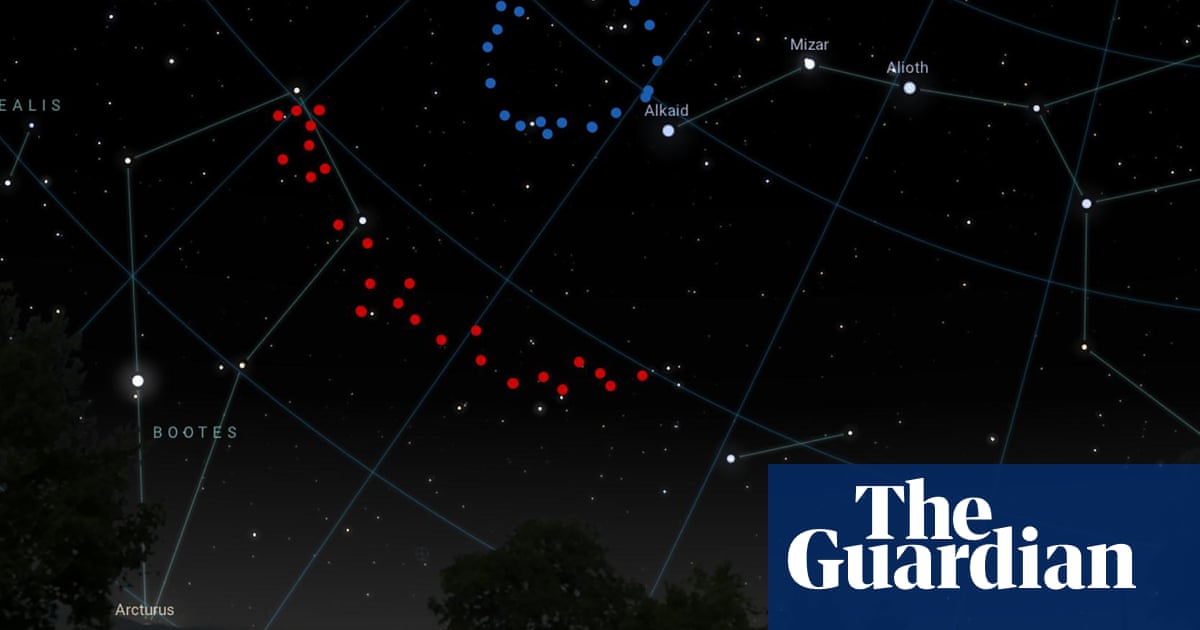Astronomers have discovered a ring-shaped cosmic megastructure, the proportions of which challenge existing theories of the universe.
The so-called Big Ring has a diameter of about 1.3bn light years, making it among the largest structures ever observed. At more than 9bn light years from Earth, it is too faint to see directly, but its diameter on the night sky would be equivalent to 15 full moons.
The observations, presented on Thursday at the 243rd meeting of the American Astronomical Society in New Orleans, are significant because the size of the Big Ring appears to defy a fundamental assumption in cosmology called the cosmological principle. This states that above a certain spatial scale, the universe is homogeneous and looks identical in every direction.
“From current cosmological theories we didn’t think structures on this scale were possible,” said Alexia Lopez, a PhD student at the University of Central Lancashire, who led the analysis. “We could expect maybe one exceedingly large structure in all our observable universe.”
Zooming out on the universe should, in theory, reveal a vast, featureless expanse. Yet the Big Ring is one of a growing list of unexpectedly large structures. Others include the Giant Arc, which appears just next to the Big Ring and was also discovered by Lopez in 2021. Cosmologists calculate the current theoretical size limit of structures to be 1.2bn light years, but the Big Ring and the Giant Arc, which spans an estimated 3.3bn light years, breach this limit.
Intriguingly, the two structures are at the same distance from Earth, near the constellations of Boötes the Herdsman, raising the possibility that they are part of a connected cosmological system.
“These oddities keep getting swept under the rug, but the more we find, we’re going to have to come face-to-face with the fact that maybe our standard model needs rethinking,” said Lopez. “As a minimum it’s incomplete. As a maximum we need a completely new theorem of cosmology.”
The Big Ring was discovered by analysing data from the Sloan Digital Sky Survey (SDSS), a catalogue of distant quasars. These objects are so bright that they can be seen from billions of light years away and act like giant, distant lamps, illuminating intervening galaxies that their light passes en route and which otherwise would go unseen.
Lopez and colleagues used several different statistical algorithms to identify potential large-scale structures and the Big Ring emerged. The structure appears as an almost perfect ring on the sky, but further analysis revealed it has more of a coil shape, like a corkscrew, which is aligned face-on with Earth.
Cosmologists are unsure what mechanism could have given rise to the structure. One possibility is a type of acoustic wave in the early universe, known as baryonic acoustic oscillations, that could give rise to spherical shells in the arrangement of galaxies today. Another explanation is the existence of cosmic strings, hypothetical “defects” in the fabric of the universe that could cause matter to clump along large-scale faultlines.
Dr Jenny Wagner, a cosmologist at the Bahamas Advanced Study Institute & Conferences, described the discovery as significant. “It doesn’t seem to be a mere chance alignment,” she said.
Wagner said it was possible to accommodate the Big Ring within the cosmological principle, depending on how its limits are defined, but that the more of these outlier, large-scale structures that are discovered, the less statistically plausible this view becomes. “This is why the search for further giant structures is so valuable,” she said. “Personally, I wouldn’t be surprised if we have to abandon the cosmological principle after future discoveries.”







